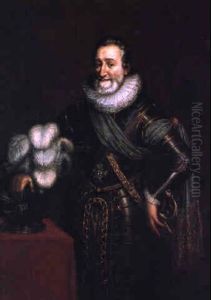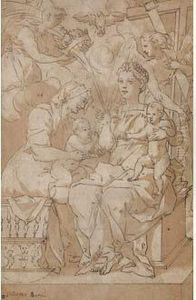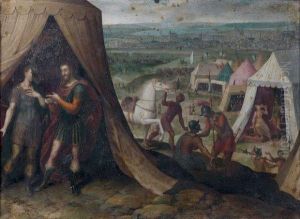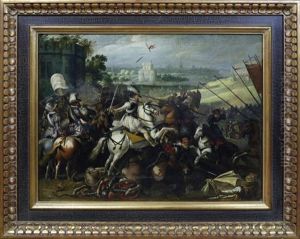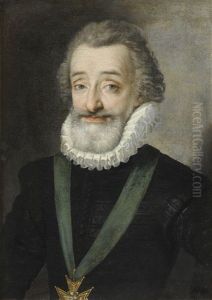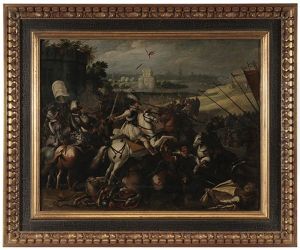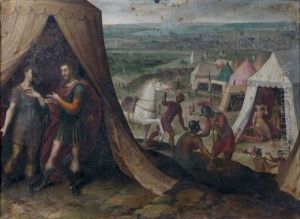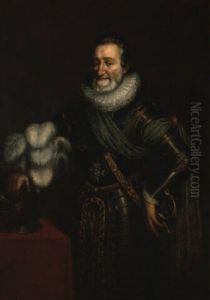Jacob Bunel Paintings
Jacob Bunel was a French painter, born in 1558, whose work is emblematic of the transition between the Renaissance and Baroque periods. Despite the scarcity of detailed records about his life and career, Bunel is recognized for his contributions to 16th and early 17th-century European art, particularly in France, where he spent much of his professional life. His paintings, characterized by their vivid detail, rich colors, and intricate compositions, reflect the artistic and cultural shifts of his time.
Bunel received his artistic training in France but also spent a significant period in Italy, which was common for artists of his era seeking to refine their skills and absorb the Renaissance's artistic innovations. This exposure to Italian art and thought profoundly influenced his style and approach to painting. Upon returning to France, Bunel became involved in the royal court's artistic projects, which was a prestigious position that allowed him to contribute to the visual glorification of the French monarchy.
Throughout his career, Jacob Bunel worked on several important commissions for the French court, including portraits of royalty and nobility, religious themes, and mythological scenes. His ability to blend the idealized beauty of the Renaissance with the emotional depth and dynamism of the Baroque set his work apart. Bunel's most notable works often feature a meticulous attention to detail, a mastery of light and shadow, and a keen sense of composition, which together create a vivid sense of realism and emotional intensity.
Despite his achievements, Bunel's work was somewhat overshadowed by the luminaries of his time, and many of his pieces were attributed to other artists until more recent scholarship began to properly credit his contributions to the art world. He passed away in 1614, leaving behind a legacy that, though underappreciated in the centuries following his death, has come to be recognized for its significance in the development of French art. Today, Jacob Bunel is celebrated not only for his artistic skill but also for his role in bridging the gap between the Renaissance's ideals of beauty and harmony and the Baroque's dynamism and emotional expressiveness.

